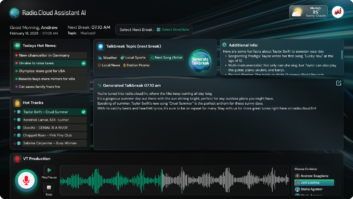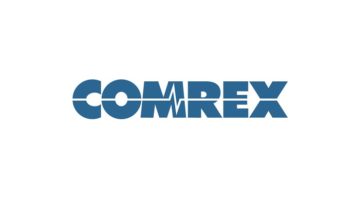IBC2018 is approaching. Between now and then Radio World offers a series of short Q&As with manufacturers about their plans and offerings, to help you get the most out of the annual trade show. Hans van Zutphen is CEO of Thimeo Audio Technology.

Radio World: How has business been for the company since last year’s IBC Show?
Hans van Zutphen: Good! Very good, actually. We’ve grown in office space, number of employees and sales. And we’re working on some products that are completely new — which I can’t say too much about until we are close to having something that we can actually sell. They are probably not going to be far enough along to show at this IBC. But, please keep an eye on us!
RW: What are you hearing from your customers about their business outlook this year? In what areas should we expect growth or the most interesting projects?
van Zutphen: If we had to choose between selling one product for US$10.000 or 10 products for US$1.000 each, we prefer the latter. I know that many companies would choose the opposite — but we’re not like those other companies. I originally got into this as a hobby (well, how else does one get started with audio processing?), and selling 10 products is more fun than selling one. So, we’re keeping our prices as low as possible. This means that the business outlook of stations doesn’t really affect us much. If you can’t afford our prices, you have bigger problems…
RW: You’ve been active as a developer of audio broadcast software for 14 years. What’s the biggest problem or challenge facing users in this segment right now?
van Zutphen: I don’t really see any big challenges or problems. Things are changing, but they always are. One thing could be the competition between traditional (FM) broadcasters and digital solutions, such as streaming services. To focus on the processing part: Assuming good reception, it’s definitely possible to make FM sound as good as — or depending on the bitrates used: even better than — streaming services. Interestingly, what we often see is that FM stations try to replicate their FM sound on their streams, instead of vice versa, including pumping and distortion. Some even purposely use pre-emphasis to replicate the muffled highs that many FM stations have. Streaming codecs usually don’t like these effects at all, so on top of this you get extra codec artifacts.
I’ve heard from multiple people who almost always listen to music streaming services in their car and accidentally switched over to FM that they were shocked by how bad it sounded, and they switched back immediately. And that’s absolutely unnecessary.
For clarity, I’m not saying that you shouldn’t aim for a big signature sound, either on FM or digital. Of course you want to stand out and be noticed. But, having muffled and distorted highs on your stream “because that’s what radio is supposed to sound like” doesn’t seem to be the right path to me.
RW: What new products will your company be showing? Why should attendees visit your stand? (Stand 8.E38)
van Zutphen: Where should I get started? Let me just give you the highlights of what’s new since the last IBC.
Stereo Tool 9 has just been released, and it’s the biggest upgrade — both in time spent on development and in features — in years. The overall processing core is replaced and sounds better, especially at low latencies. There’s a new bass clipper, which together with the also new Bass EQ gives a very warm and controlled bass sound — something that many people have been asking for. Besides that, the whole dynamics engine is in large part rewritten and greatly improved: The Auto EQ which balances the input spectrum and was released just prior to the previous IBC is improved and handles sudden changes in sound more transparently. The AGC is more relaxed than before, but it’s actually more accurate in keeping the levels constant. The biggest change is in the multiband compressors: The new “symmetric” compressor mode gives a very natural sound, and it’s much harder than before to make it sound bad – which means that it’s possible to make it sound exactly like you want without compromise. It moves fast when it has to, but stands still when it can – which gives a very non-fatiguing sound.
There are lots of smaller improvements as well, for example the Delossifier which repairs lossy compressed audio such as MP3 files on the fly works better, and the RDS encoder has lots of new features that are normally only found in high end stand alone RDS encoders, such as ODA groups for things like TMC, Enhanced Other Networks and a lot more.
Then there’s µMPX (MicroMPX), our codec that transmits the full composite FM signal, including stereo and RDS, using only 320 kbps, with perfect peak control. It was already being sold by Telos, and it’s now also included in Stereo Tool. We have made several improvements in it, such as password protected streaming and GPS synchronization for single frequency networks.
WatchCat, our program to batch process and convert files in a watch folder, is also improved: It can now resample audio, and you can setup multiple watch folders that are processed differently.
There are still a few weeks before the show starts, so we might have more new stuff by then.
RW: What specific challenges and/or developments do you expect in your markets over the next 12 months?
van Zutphen: Ask me after the show!
RW: Is the IBC Show a good investment?
van Zutphen: I think it is. In money it’s not always clear — you usually don’t know whether a sale happened due to a booth visit at the IBC or NAB, or that it would have happened anyway. Sometimes it’s perfectly clear — one year we had a customer who ordered over 100 FM processor licenses on the show floor. Though most of the time it’s hard to tell.
But there’s another big important thing about being there: talking to so many existing and potential customers for days on end brings up lots and lots of new ideas for new products and features. We haven’t even started yet with implementing the ideas that came out of the last NAB. It also gives you a feeling of where things are going — the year when we just started working on µMPX, many people asked for a solution to stream the full composite signal over IP. We couldn’t say anything yet, but it confirmed that we were on the right path.
RW: Will you be attending any sessions or looking forward to any events?
van Zutphen: The biggest thing I’m looking forward to is actually the weekend before the IBC: The Processing Freakday. It’s an event where almost all the manufacturers of audio processing equipment and software come together, present what they have, and the day ends with a big comparison.
[Related: IBC2018 Best of Show Award Entries Open]
RW: How long have you been attending IBC? How has the show changed since your first visit?
van Zutphen: Well, the first time I was there — as a visitor — was in 2011, and the first time we had a small booth there was in 2013. The experience from having a booth is so completely different from walking around that I can’t compare the two. So the only thing I can really comment on is what people are visiting our booth. The first year, and to a lesser extent the second, we had a lot of people coming over who didn’t really know us, that’s hardly happening anymore, everyone seems to know who we are now. The question “What is this?” is replaced by “What is new?”.
RW: What’s your favorite thing about this show?
van Zutphen: Talking to lots of people and getting new ideas.







